This page summarizes the findings from studies done at NASA on Parawing models 1-24.
These models are described in two NASA technical reports, NASA TN D-5936 and NASA TN D-5965. A list of technical reports, including these can be found on the NASA Parawing Reports page.
NASA Parawing models 1-10
NASA Parawing models 1-10 are described in technical report NASA TN D-5936, found at the NASA Technical Reports Server.
Published: October, 1970
Title: Low-Speed Wind-Tunnel Investigation of a Series of Twin-Keel All-Flexible Parawings
Author: Rodger L. Naesleth
Langley Research Center
file: 19710000578_1971000578.pdf
Abstract: "Twin-keel parawings were found to have improved performance characteristics as compared with single-keel parawings. The maximum lift-drag ratios of the models ranged from 2.6 to 3.2."
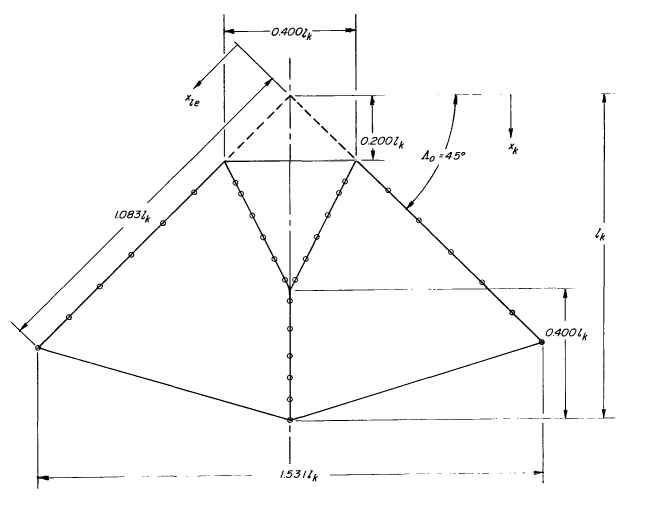 |
Nasa Parawing model 1 Source: technical report NASA TN D-5936 keel line spacing: uneven max lift/drag ratio: 2.6 |
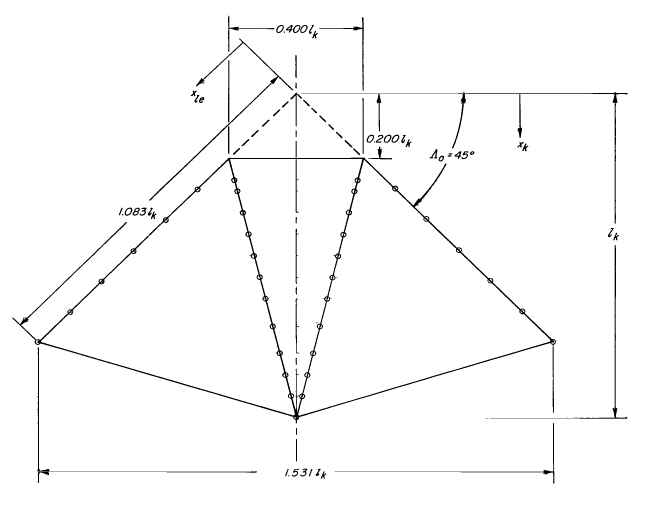 |
Nasa Parawing model 2 Source: technical report NASA TN D-5936 keel line spacing: uneven max lift/drag ratio: 2.75 |
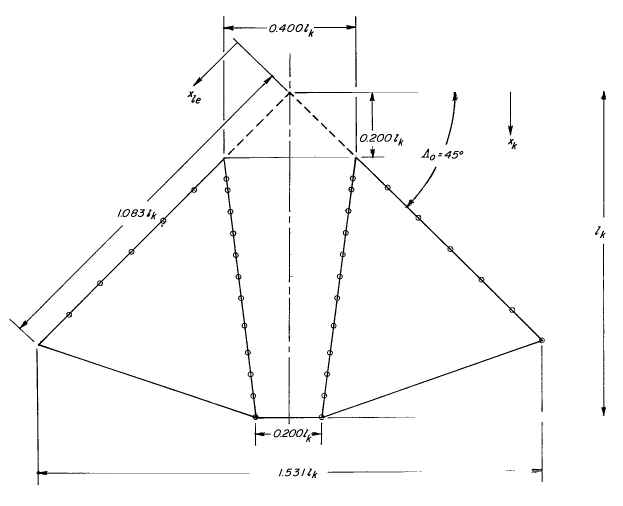 |
Nasa Parawing model 3 Source: technical report NASA TN D-5936 keel line spacing: uneven max lift/drag ratio: 2.6 |
 |
Nasa Parawing model 4 Source: technical report NASA TN D-5936 keel line spacing: even max lift/drag ratio: 3.2 |
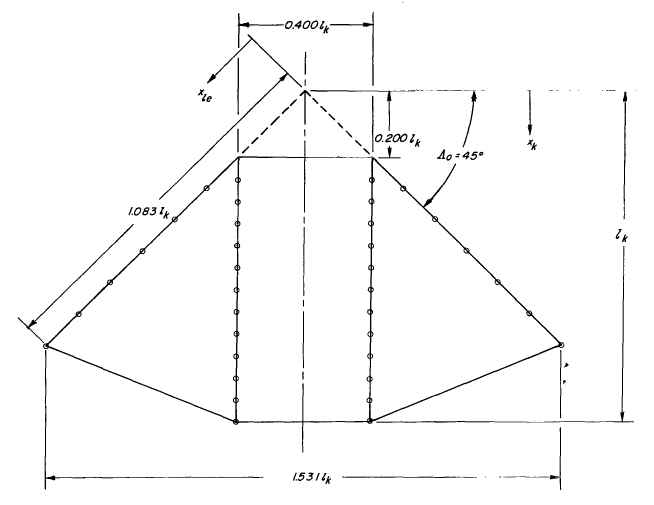 |
Nasa Parawing model 5 Source: technical report NASA TN D-5936 keel line spacing: even max lift/drag ratio: 2.9 |
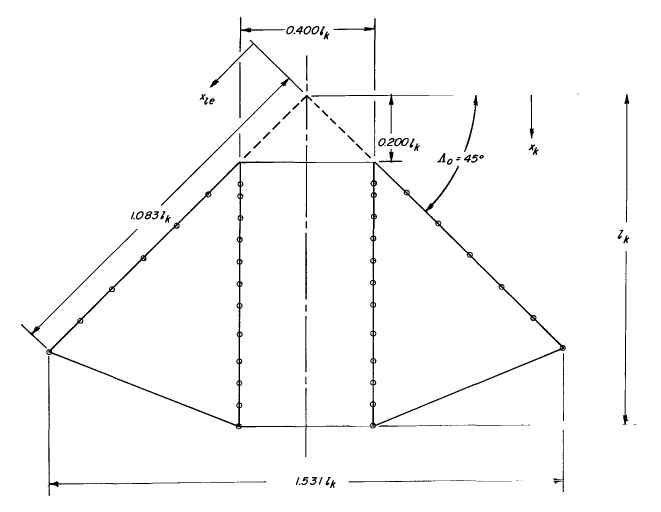 |
Nasa Parawing model 6 Source: technical report NASA TN D-5936 keel line spacing: uneven max lift/drag ratio: 2.75 |
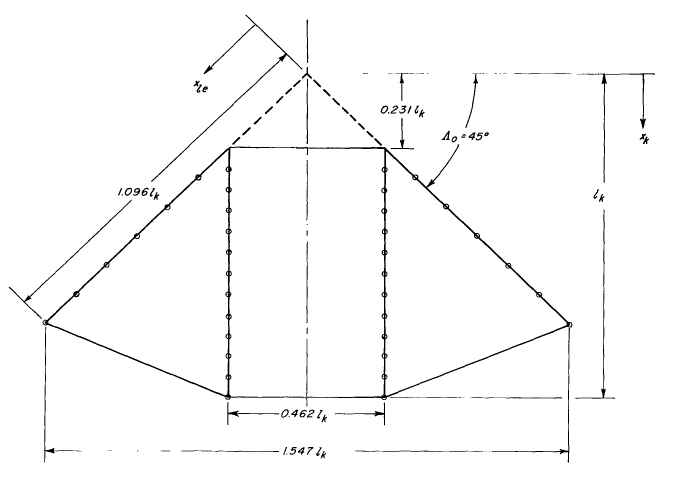 |
Nasa Parawing model 7 Source: technical report NASA TN D-5936 keel line spacing: even max lift/drag ratio: 3.0 |
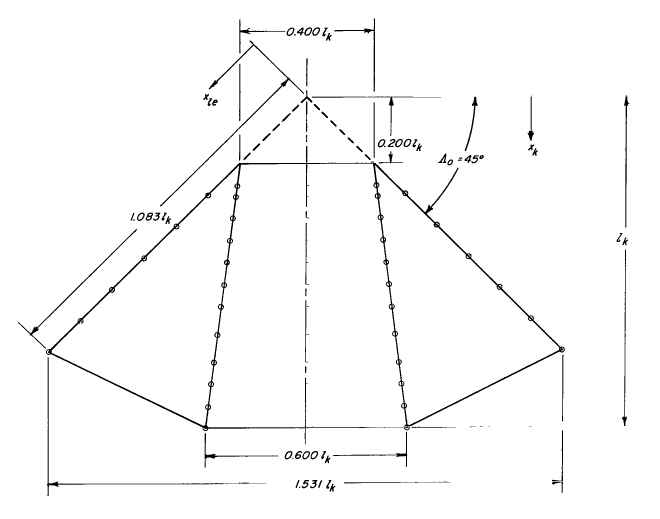 |
Nasa Parawing model 8 Source: technical report NASA TN D-5936 keel line spacing: uneven max lift/drag ratio: 3.1 |
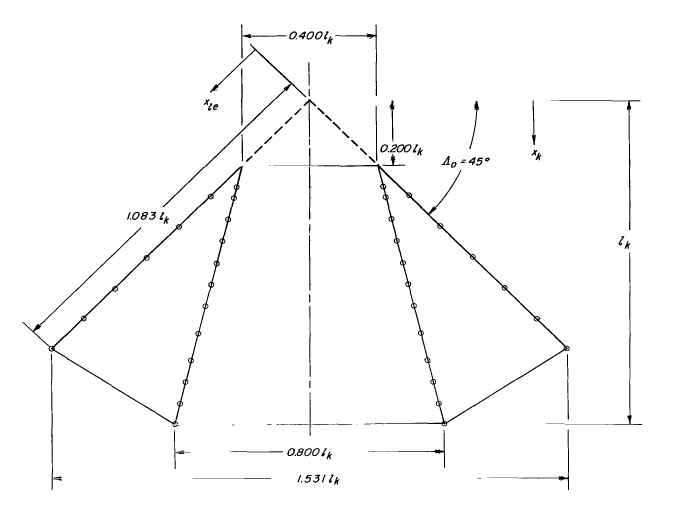 |
Nasa Parawing model 9 Source: technical report NASA TN D-5936 keel line spacing: uneven max lift/drag ratio: 3.2 |
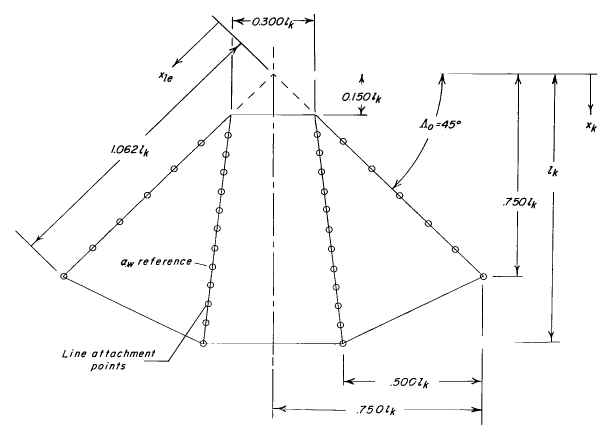 |
Nasa Parawing model 10 Source: technical report NASA TN D-5936 keel line spacing: uneven max lift/drag ratio: 3.0 |
NASA Parawing models 17-24
NASA Parawing models 17-24 are described in technical report NASA TN D-5965, found at the NASA Technical Reports Server.
October, 1970
Low-Speed Wind-Tunnel Investigation of All-Flexible Twin-Keel Tension-Structure Parawings
Paul G. Fournier
NASA Langley Research Center
file: 19700031372_1970031372.pdf
Abstract: "... values of maximum lift-drag ratio increased from 2.78 to 3.27 as the keel cant angle was varied from 0° to 20°. Increasing the keel-payload separation to 1.25 keel length increased the maximum lift-drag ratio of the model with 15° cant angle to a value of 3.41. A modification to the line attachment at the formed nose on the center panel of this parawing increased the maximum lift-drag ratio to 3.48."
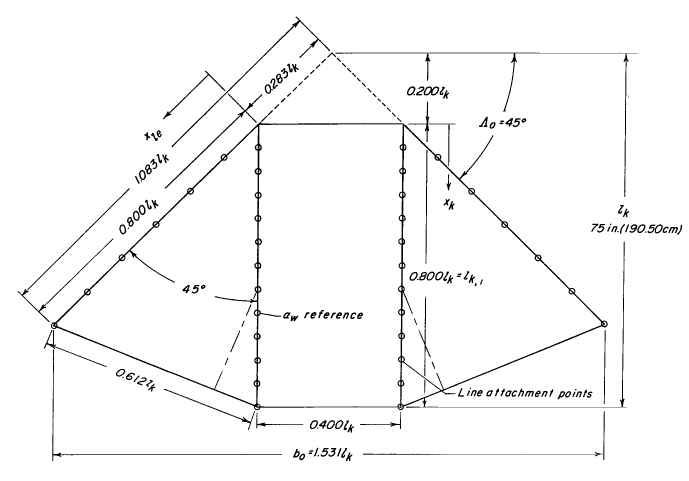 |
Nasa Parawing model 5 Source: technical report NASA TN D-5965 keel line spacing: even max lift/drag ratio: 2.8 |
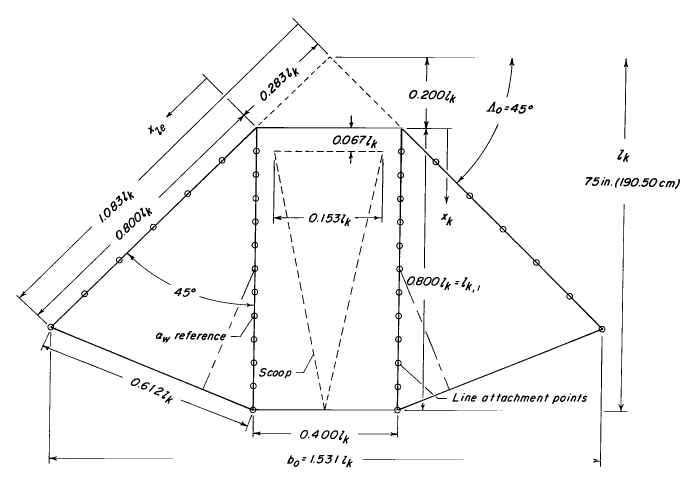 |
Nasa Parawing model 17 Source: technical report NASA TN D-5965 keel line spacing: even max lift/drag ratio: 2.75 |
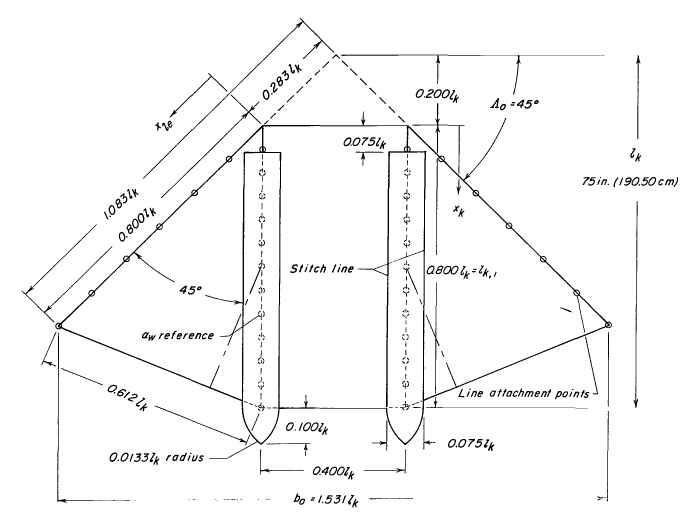 |
Nasa Parawing model 18 Source: technical report NASA TN D-5965 keel line spacing: even max lift/drag ratio: 2.85 |
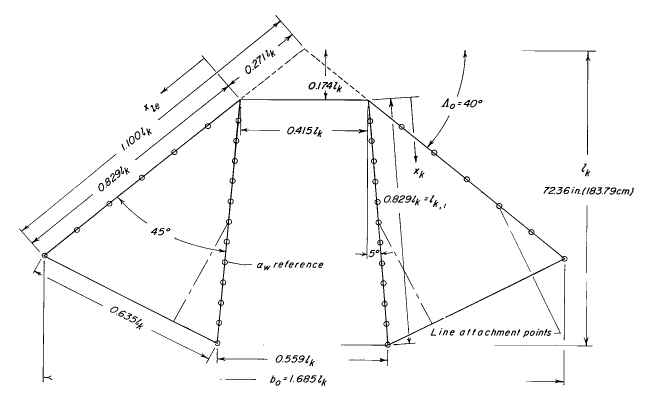 |
Nasa Parawing model 19 Source: technical report NASA TN D-5965 keel line spacing: even max lift/drag ratio: 3.1 |
 |
Nasa Parawing model 20 Source: technical report NASA TN D-5965 keel line spacing: even max lift/drag ratio: 3.2 |
 |
Nasa Parawing model 21 Source: technical report NASA TN D-5965 keel line spacing: even max lift/drag ratio: 3.25 (3.48 with longer lines and nose line modification) |
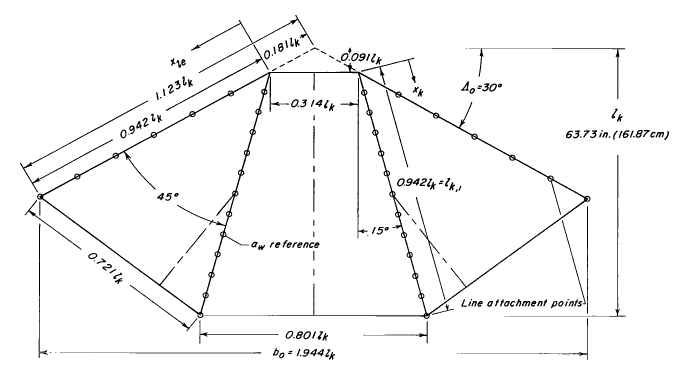 |
Nasa Parawing model 22 Source: technical report NASA TN D-5965 keel line spacing: even max lift/drag ratio: 3.1 |
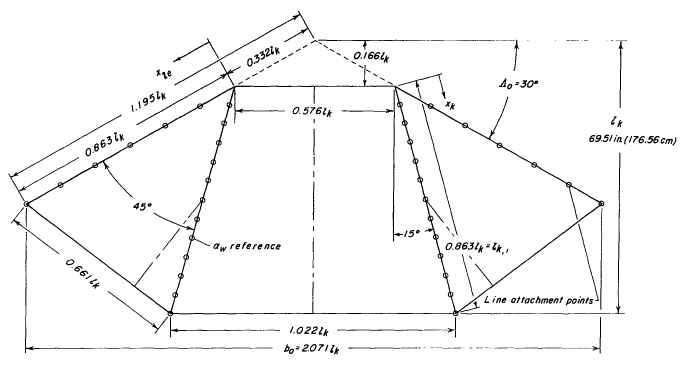 |
Nasa Parawing model 23 Source: technical report NASA TN D-5965 keel line spacing: even max lift/drag ratio: 2.92 |
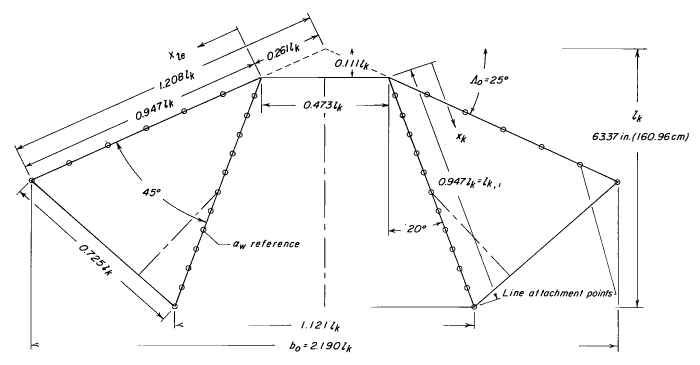 |
Nasa Parawing model 24 Source: technical report NASA TN D-5965 keel line spacing: even max lift/drag ratio: 3.25 |
Notes
Model 6 was a variation of model 5 which had uneven line spacing. Model 5 turned out to have better numbers than model 6. However, the best of the first test group, model 9, used uneven keel line spacing. It would be interesting to see if a model 9 with even keel line spacing would have produced even better numbers. This observation is probably why the second group only used even keel line spacing.There is a disparity between the measured lift/drag ratios of the model 5's in the two reports. D-5936 shows 2.9, D-5965 shows 2.8. D-5965 does not explain this, even though it references D-5936.
Model numbers 11-16 don't seem to be described anywhere. D-5965 (describing 17-24) references D-5936 (describing models 1-10), but does not reference any reports which describe models 11-16.
Model 9 has the best numbers in the first report. The closest match in the second report is model 21. Model 21 has slightly better numbers than model 9. Model 21 differs from model 9 in that the center panel is slightly wider and the wing sweep back angle is less.
Model 24 has a larger cant angle center panel and even less wing sweep back angle than model 21. The initial lift/drag numbers are similar (in disagreement to the text of the report, but I am reading the graphs directly) between the two models. It is not reported if the modification which brought model 21 a lift/drag result of 3.48 were also tried on model 24.
The report details improvements made in relation to model 5:
- Increase the keel cant angle. 15° to 20° is good.
- Increasing the center panel width only seems to increase the lift drag ratio if the keel cant angle is also increased.
- Even line spacing is best.
- Reducing the wing sweep back angle improves the lift/drag ratio. 25° and 30° are tested in the second report.
- Longer lines are better. From the report, a factor of 1.25 of the keel length seems to be optimal.
- Nose shape is important and special treatment can increase the lift/drag ratio.
Related pages:
NASA Parawing Reports
NASA Parawing Profiles